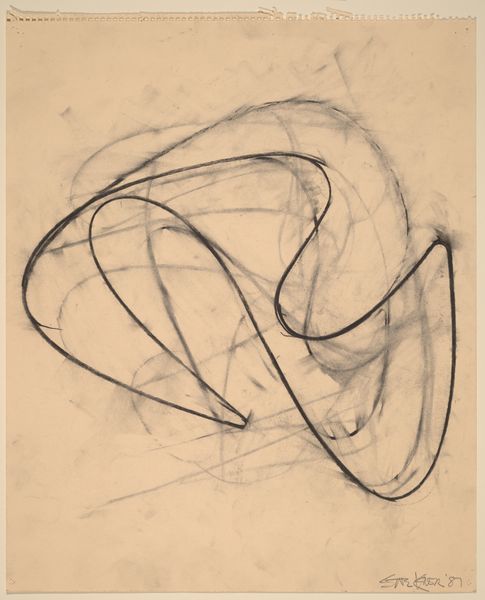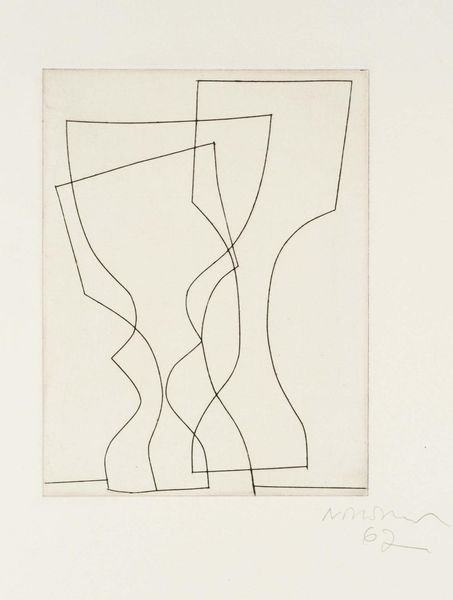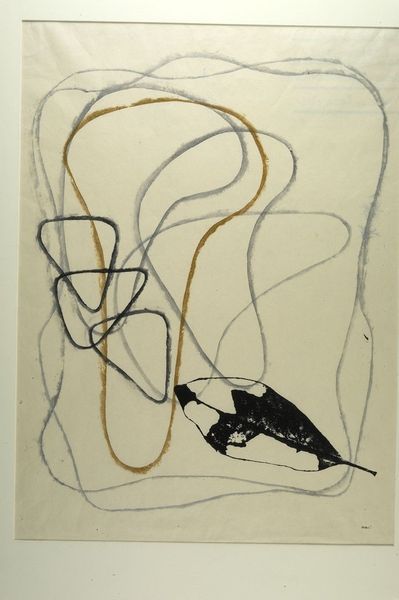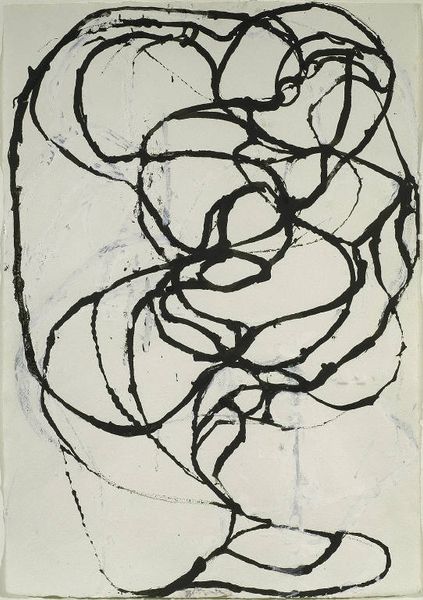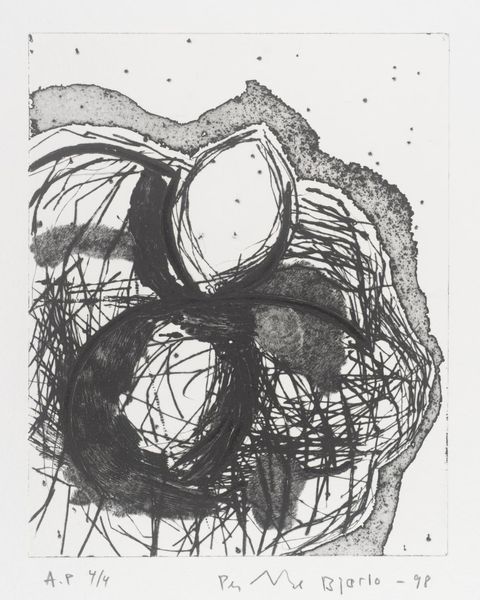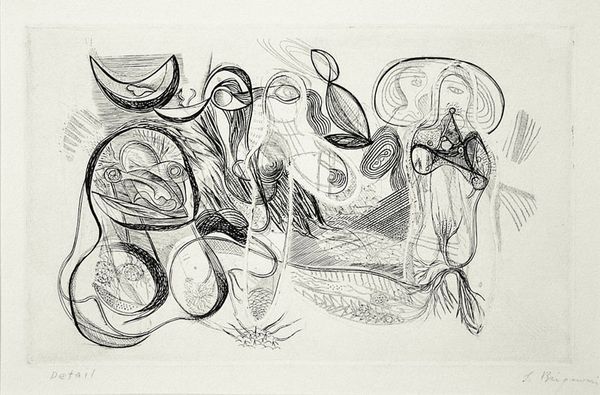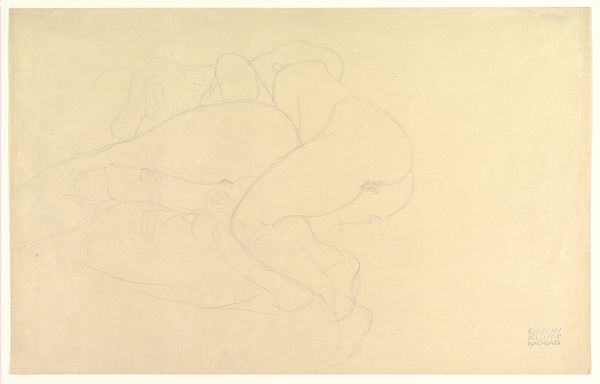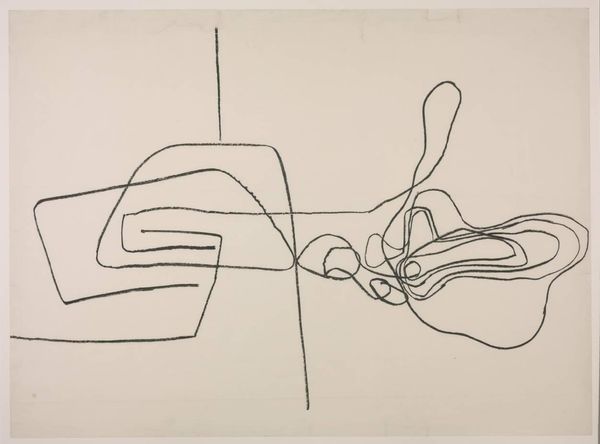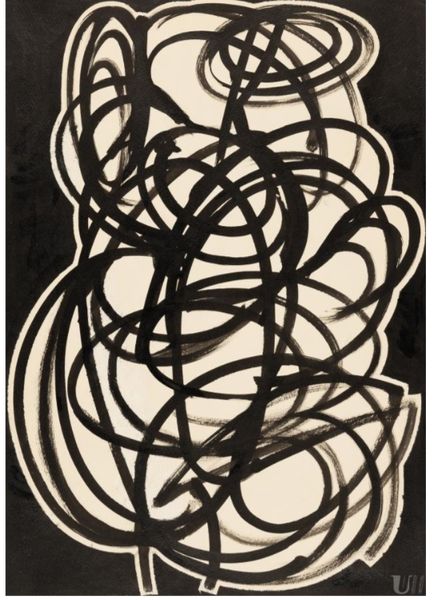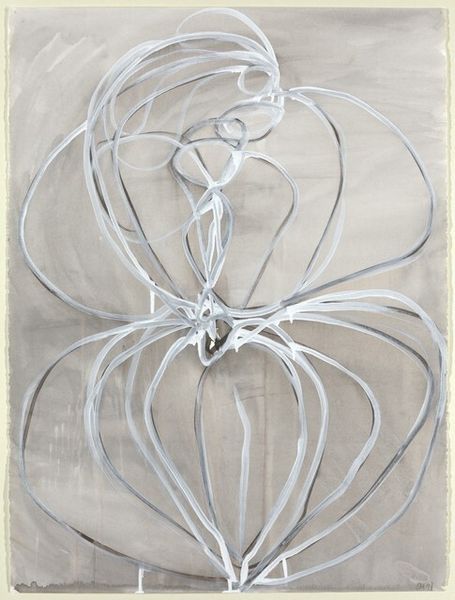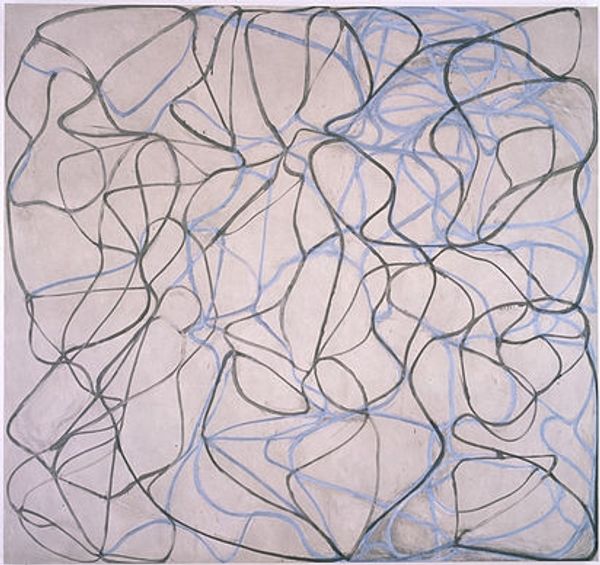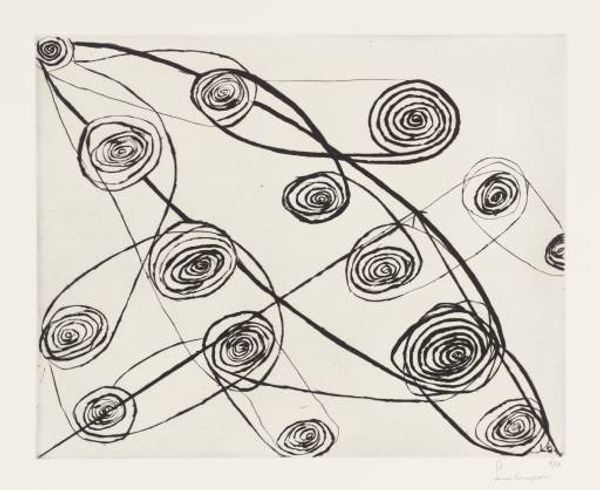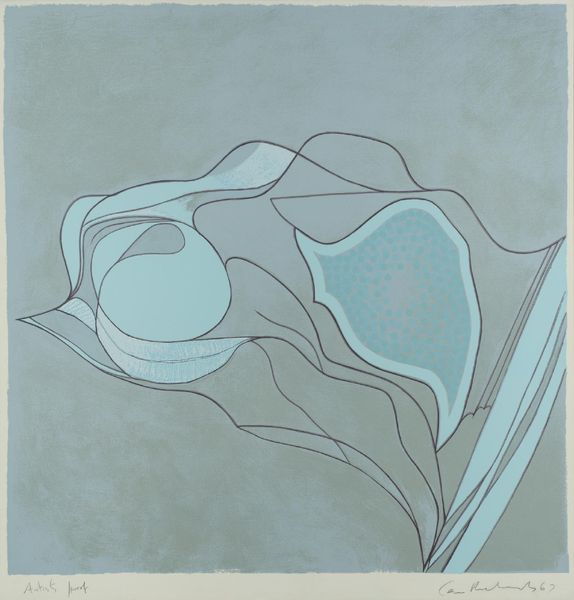
Dimensions: support: 460 x 645 mm
Copyright: © Richard Deacon | CC-BY-NC-ND 4.0 DEED, Photo: Tate
Editor: This is an Untitled Drawing by Richard Deacon, made with graphite on paper. It strikes me as both simple and incredibly sensual. What do you see in this piece? Curator: I see a negotiation between form and fluidity. The intertwined shapes, while abstract, evoke the human body and its potential for transformation. Consider the socio-political context: Deacon emerged during a time of questioning traditional sculptural forms. Editor: So, this drawing is almost like a rejection of rigid structures? Curator: Exactly! It's a move toward embracing ambiguity and the intersectional nature of identity. It allows us to consider how binaries are not innate but constructs that can be deconstructed, much like the drawing itself. Editor: I see it now, thank you! Curator: My pleasure!
Comments
tate 6 months ago
⋮
http://www.tate.org.uk/art/artworks/deacon-untitled-drawing-t05208
Join the conversation
Join millions of artists and users on Artera today and experience the ultimate creative platform.
tate 6 months ago
⋮
Untitled Drawing is a pencil drawing on cream cartridge paper. It was produced in 1980, a year after Deacon completed his series of drawings, It's Orpheus When There's Singing, one of which is in Tate's collection (It's Orpheus When There's Singing #7, 1978-9, Tate T04859). In conversation with a Tate curator (29 October 1996), Deacon suggested that this drawing was consciously made as a form of relief from the precise methods employed in the earlier series. Those drawings emerged from the controlled use of grids, compasses and meticulously applied geometry. Untitled Drawing, however, was an attempt to approach the work of image-making more directly. The drawing shows two rounded vessel shapes connected to each other by a band or tube, almost umbilical in its associations. Deacon describes the image he had in mind when embarking on this work as related to the Yin/Yang concept of the harmonious interaction of opposites. This concept is usually imaged as a circle divided by a curved line through its centre, which separates black from white. This familiar symbol is suggested by the vessel on the right-hand side of the drawing, in which the image of a divided circle is discernable. Deacon recalls that, when making the work, he used rhythmic gestures to enhance the movement of his lines and to fill the paper. He erased lines and added new ones over and over again. The repeated rubbings out remain visible as smudged, shadowy lines beneath the image. The drawing does not refer to any contemporaneous sculptural idea, although Deacon believes that it is related to the much later work of 1987/8, Before My Very Eyes #2 (private collection). However, the extraordinary sense of movement suggested by Untitled Drawing also recalls the serpentine curves of Deacon's laminated wood sculptures, such as For Those Who Have Ears #2 (Tate T03958). The drawing's diagrammatic quality echoes the open linear structures of such work. Further reading:A Quiet Revolution: British Sculpture Since 1965, exhibition catalogue, Museum of Contemporary Art, Chicago 1987.Jon Thompson, Pier Luigi Tazzi and Peter Schjeldahl, Richard Deacon, London 1995.Sculptors' Drawings Presented by the Weltkunst Foundation, broadsheet, Tate Gallery, London 1994 [p.3]. Helen DelaneyNovember 2001
